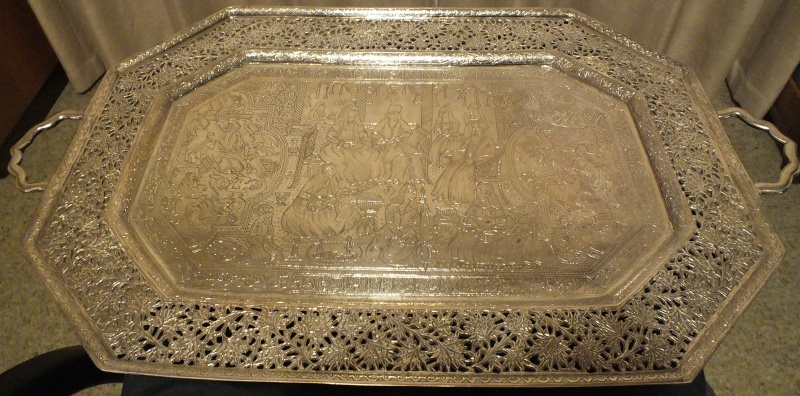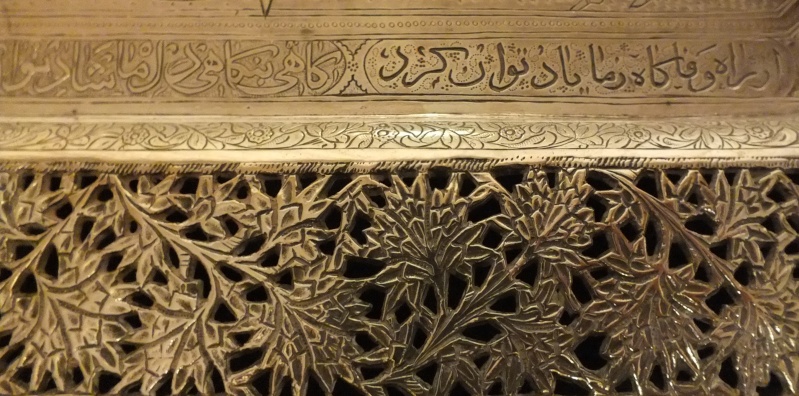
The tray is unusual for Persian silver because it includes a wide rim of open work, reminiscent of some Chinese export silver trays. The difference here is that the work is not of bamboo leaves, but rather that emblematic Persian motif, Plane Tree foliage (the Derakht-e Chinaar).

The second interesting point is the frieze of poetry that runs the inside rim of the tray, below the cavetto. I was surprised to discover that the poet was not one of the classical greats such as Rumi, Saadi, Hafez or Nezami. He is in fact a nearly contemporaneous (with the tray) poet by the name Mullah Ahmad Naraaghi, who, when not writing poetry was acting as the most influential Shia cleric in early Qajar Iran, declaring holy war against the Russians among other exploits. Outside Iran he is very obscure today, but inside Iran still very much of the moment. Most scholars of the Islamic Revolution trace its intellectual genealogy to this man. To cut the story short, the philosophical or moral lesson behind the verses on this tray is loyalty, perhaps to authority.
The third point to mention is that the tableaux includes three panels - two scenes from Nezami's classical tragic romance Khosrow and Shireen, and one from the same poet's other tragic romance Layli and Majnoon. I can roughly date the tray to 1860 by the clothing worn by the characters in the central panel, which looks to all the world like the inside of the mid-Qajar period royal court; but which purports to be a court scene in which the future Sassanian King of Kings, Khosrow Parvez marries his Christian Aramean love Shireen in exile in the year 591 AD, in the presence of the Eastern Roman Emperor Maurice (his patron). Note the all female court orchestra.

I surmise that the engraved scenes - which are of supremely good workmanship for the period - were purely decorative; while a pointed message was sent in the form of the poetry. At a guess I would say that the tray was commissioned, perhaps even by Naser al-Din Shah Qajar (r.1931-1896), so good is the work, and given to a suspect but powerful Khan (baron). The poetry carries literary and implied religious authority.
The style does not look to be that of Isfahan. So my questions include; is this from the Tehran workshops of the Royal Court, or from Shiraz, the style of which it resembles slightly better? Are the scenes taken from one of the illustrated lithographic books that were produced up to about 1900 in Iran (perhaps from one or more of those on Nezami? I can't find anything similar to this by Googleing, so are similar works recorded?
I hope someone is out there who many have some helpful information. Apologies for the relatively poor quality of the pictures - it is very big piece and hard to photograph under unnatural light. It is certainly more impressive in person. Sincere thanks in advance.